We use cookies to personalize content and advertisements, to offer social media functions and to analyze access to our website.
You can revoke the given consent at any time. You can find further information in our Privacy Policy.
Sep 2017
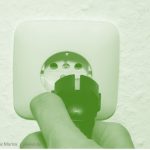 Businesses affected by the WEEE Directive 2012/19/EU will face a considerable update in the near future: starting from August 15, 2018, all EEE in scope of the Directive has to be classified according to the so called ‘open scope’.
Firstly, the 10 current EEE categories will be replaced by the six new categories listed in Annex III of the WEEE Directive. From the open scope period onwards, any equipment that falls under the definition of EEE as set out in Article 3 (1) (a) is in scope.
Secondly, several national compliance schemes and authorities in various EU countries are already working on a new structure. This new structure will consequently affect:
• Registration categories (i.e. registration adjustments needed)
• Declaration categories (i.e. several sub-categories)
• Price lists of compliance schemes
As we know from today, various requirements exist in the different EU Member States. Thus, the complexity for producers fulfilling their WEEE obligations will remain in the future, since no harmonization (i.e. several sub-categories) is expected among the different national compliance schemes.
We will keep you in the loop!
For more information, please contact us at info@1cc-consulting.com
Businesses affected by the WEEE Directive 2012/19/EU will face a considerable update in the near future: starting from August 15, 2018, all EEE in scope of the Directive has to be classified according to the so called ‘open scope’.
Firstly, the 10 current EEE categories will be replaced by the six new categories listed in Annex III of the WEEE Directive. From the open scope period onwards, any equipment that falls under the definition of EEE as set out in Article 3 (1) (a) is in scope.
Secondly, several national compliance schemes and authorities in various EU countries are already working on a new structure. This new structure will consequently affect:
• Registration categories (i.e. registration adjustments needed)
• Declaration categories (i.e. several sub-categories)
• Price lists of compliance schemes
As we know from today, various requirements exist in the different EU Member States. Thus, the complexity for producers fulfilling their WEEE obligations will remain in the future, since no harmonization (i.e. several sub-categories) is expected among the different national compliance schemes.
We will keep you in the loop!
For more information, please contact us at info@1cc-consulting.com
Aug 2017
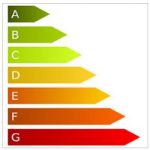 The new EU Regulation 2017/1369 setting a framework for energy labelling entered into force as of August 1, 2017. Regulation EU 2017/1369 applies directly in all EU Member States. The former EU Directive 2010/30/EU was repealed.
EU Regulation 2017/1369 foresees some changes for distributor, producers, importers and dealers. The most important ones refer to the rescaling of the energy efficiency label and the implementation of a central product database.
According to the new Regulation products shall only be labeled with the energy efficiency classes A to G. The currently existing classes A+, A++ and A+++ for further differentiation within class A will be omitted. Besides the information about the actual energy efficiency class, the full spectrum of classes has to be shown on the label. EU Member States will inform about the introduction of the new labels. It is expected that first products showing the new label will be available on the market in 2020.
The new product database will contain a public part and a non-public compliance part with clearly specified accessibility and security requirements. The public part will contain all product related information which will enable the customer to better compare the products. The compliance part will only be accessible by market surveillance authorities and the Commission in order to perform a more efficient market surveillance within the EU.
The new EU Regulation 2017/1369 setting a framework for energy labelling entered into force as of August 1, 2017. Regulation EU 2017/1369 applies directly in all EU Member States. The former EU Directive 2010/30/EU was repealed.
EU Regulation 2017/1369 foresees some changes for distributor, producers, importers and dealers. The most important ones refer to the rescaling of the energy efficiency label and the implementation of a central product database.
According to the new Regulation products shall only be labeled with the energy efficiency classes A to G. The currently existing classes A+, A++ and A+++ for further differentiation within class A will be omitted. Besides the information about the actual energy efficiency class, the full spectrum of classes has to be shown on the label. EU Member States will inform about the introduction of the new labels. It is expected that first products showing the new label will be available on the market in 2020.
The new product database will contain a public part and a non-public compliance part with clearly specified accessibility and security requirements. The public part will contain all product related information which will enable the customer to better compare the products. The compliance part will only be accessible by market surveillance authorities and the Commission in order to perform a more efficient market surveillance within the EU.
Jul 2017
On 25, Jul 2017 | In Copyright Levies, News @en | By Alisa Maier
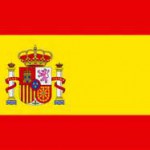 As a result of recent court decisions at European and National level, Spain has now reintroduced its copyright levy system as from 1 August 2017. Affected companies are strongly recommended to make appropriate preparations. Although there is no competent authority yet installed to support the administrative process right down to payments, manufacturers and importers of IT and CE equipment should take the new levies into account in their product pricing from now on.
Thus, there is little time in which to implement the administrative process: the recommendation for affected companies is to identify the relevant tariffs per device and storage medium, to list Copyright levies on invoices as of 1 August 2017, to build accruals for future payments and to prepare reportings (as of end of September).
Beyond that, there is the possibility to actively seek further clarification. Until 31 July 2017, representative individuals and organizations which are possibly affected, can participate in a previous public consultation (Consulta Pública previa), which does not provide any specific text or questionnaire to be commented, but is rather general. They can send their input to the competent Ministry via email: Propiedad.intelectual@mecd.es
Please contact 1cc for any support: copyright@1cc-consulting.com
As a result of recent court decisions at European and National level, Spain has now reintroduced its copyright levy system as from 1 August 2017. Affected companies are strongly recommended to make appropriate preparations. Although there is no competent authority yet installed to support the administrative process right down to payments, manufacturers and importers of IT and CE equipment should take the new levies into account in their product pricing from now on.
Thus, there is little time in which to implement the administrative process: the recommendation for affected companies is to identify the relevant tariffs per device and storage medium, to list Copyright levies on invoices as of 1 August 2017, to build accruals for future payments and to prepare reportings (as of end of September).
Beyond that, there is the possibility to actively seek further clarification. Until 31 July 2017, representative individuals and organizations which are possibly affected, can participate in a previous public consultation (Consulta Pública previa), which does not provide any specific text or questionnaire to be commented, but is rather general. They can send their input to the competent Ministry via email: Propiedad.intelectual@mecd.es
Please contact 1cc for any support: copyright@1cc-consulting.com
Jul 2017
 The transition period for Industrial Monitoring and Control Instruments will end: Beginning with July 22, 2017, Industrial Monitoring and Control Instruments will fall in the scope of EU Directive 2011/65/EU, and will have to fulfil the substance restrictions for lead, mercury, hexavalent chromium, polybrominated biphenyls (PBB), polybrominated diphenyl ethers (PBDE) and cadmium. Further requirements relate to the assessment and declaration of conformity, CE marking and documentation obligations.
The transition period for Industrial Monitoring and Control Instruments will end: Beginning with July 22, 2017, Industrial Monitoring and Control Instruments will fall in the scope of EU Directive 2011/65/EU, and will have to fulfil the substance restrictions for lead, mercury, hexavalent chromium, polybrominated biphenyls (PBB), polybrominated diphenyl ethers (PBDE) and cadmium. Further requirements relate to the assessment and declaration of conformity, CE marking and documentation obligations.
Jul 2017
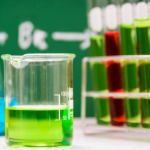 The European Chemical Agency (ECHA) has added the substance PFHxS to the Candidate List of substances of very high concern (SVHCs). Entries for bisphenol A and four phthalates have been updated in order to include endocrine-disrupting properties for human health. The Candidate List was published on July 10, 2017 by ECHA and now contains 174 substances.
Perfluorohexane-1-sulfonic acid and its salts (PFHxS) belongs to the group of per- and polyfluoroalkyl substances (PFASs). PFHxS was identified as a very persistent and very bioaccumulative substance according to REACH Article 57 e. The substance may be used as a plasticiser, lubricant, surfactant, wetting agent, corrosion inhibitor and in fire-fighting foams. More information under https://echa.europa.eu/-/one-new-substance-added-to-the-candidate-list
The European Chemical Agency (ECHA) has added the substance PFHxS to the Candidate List of substances of very high concern (SVHCs). Entries for bisphenol A and four phthalates have been updated in order to include endocrine-disrupting properties for human health. The Candidate List was published on July 10, 2017 by ECHA and now contains 174 substances.
Perfluorohexane-1-sulfonic acid and its salts (PFHxS) belongs to the group of per- and polyfluoroalkyl substances (PFASs). PFHxS was identified as a very persistent and very bioaccumulative substance according to REACH Article 57 e. The substance may be used as a plasticiser, lubricant, surfactant, wetting agent, corrosion inhibitor and in fire-fighting foams. More information under https://echa.europa.eu/-/one-new-substance-added-to-the-candidate-list
Jul 2017
On 06, Jul 2017 | In News @en | By Alisa Maier
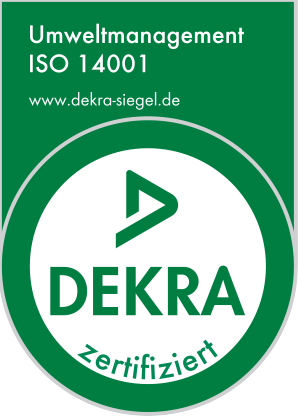 1cc
1cc  GmbH was certified by the auditing and certification company, Dekra Certification GmbH, in the scopes of quality and environment. For its successful implementation of the quality and environmental management systems, 1cc was granted the ISO 9001:2015 and ISO 14001:2015 certificates.
The ISO 9001:2015 and ISO 14001:2015 certificates are chartered for the next three years, after which 1cc will undergo renewed auditing. The firm is committed to persevere in optimising its management and environmental processes. In this context, the management appointed a quality management representative, responsible for keeping abreast of the processes and coordinating developments with management.
As a well-established consulting company, 1cc GmbH strives to attain and provide the highest quality of consulting and diverse operational services for the satisfaction of its customers and values the opportunity it had in cooperating with Dekra Certification GmbH as a professional and ambitious service Provider:
GmbH was certified by the auditing and certification company, Dekra Certification GmbH, in the scopes of quality and environment. For its successful implementation of the quality and environmental management systems, 1cc was granted the ISO 9001:2015 and ISO 14001:2015 certificates.
The ISO 9001:2015 and ISO 14001:2015 certificates are chartered for the next three years, after which 1cc will undergo renewed auditing. The firm is committed to persevere in optimising its management and environmental processes. In this context, the management appointed a quality management representative, responsible for keeping abreast of the processes and coordinating developments with management.
As a well-established consulting company, 1cc GmbH strives to attain and provide the highest quality of consulting and diverse operational services for the satisfaction of its customers and values the opportunity it had in cooperating with Dekra Certification GmbH as a professional and ambitious service Provider:
Jul 2017
 The United Arab Emirates (UAE) have recently enacted a legislation for the “Restriction of Hazardous Substances” (RoHS) in electrical and electronic equipment (EEE): Cabinet Decision No. 10/2017 was published in the Official Gazette on April 27, 2017, and came into force on the following day. The Emirates Authority for Standardization & Metrology (ESMA) is the national regulatory authority.
The law is analogous to the EU RoHS Directive 2011/65/EU – it stipulates for example the same product scope, the same substance restrictions, including the four phthalates, and identical thresholds.
However, the UAE RoHS legislation differs from EU RoHS Directive in three main aspects:
• Differences in transition periods
• Conformity assessment procedure which requires e. g. certification at ESMA
• Products already placed on the market have to comply with the requirements after the transition period
For more information, please contact us under contact@1cc-consulting.com
The United Arab Emirates (UAE) have recently enacted a legislation for the “Restriction of Hazardous Substances” (RoHS) in electrical and electronic equipment (EEE): Cabinet Decision No. 10/2017 was published in the Official Gazette on April 27, 2017, and came into force on the following day. The Emirates Authority for Standardization & Metrology (ESMA) is the national regulatory authority.
The law is analogous to the EU RoHS Directive 2011/65/EU – it stipulates for example the same product scope, the same substance restrictions, including the four phthalates, and identical thresholds.
However, the UAE RoHS legislation differs from EU RoHS Directive in three main aspects:
• Differences in transition periods
• Conformity assessment procedure which requires e. g. certification at ESMA
• Products already placed on the market have to comply with the requirements after the transition period
For more information, please contact us under contact@1cc-consulting.com
May 2017
On 30, May 2017 | In Conflict Minerals, News @en | By Alisa Maier
May 2017
On 23, May 2017 | In News @en | By Alisa Maier
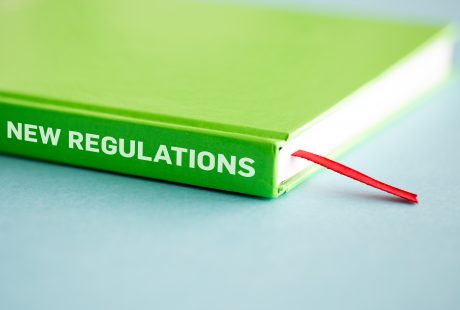 The new Law on the Further Development of Separate Collection of Recyclable Waste (Packaging Waste Law) was adopted on May 12, 2017 by the German Federal Assembly (Bundesrat). The law will enter into force on January 1, 2019 and will replace the currently applicable Packaging Ordinance.
The newly introduced registration and reporting obligation with the so called „Zentrale Stelle“ (centralized authority) constitutes the most important change. The „Zentrale Stelle“ shall facilitate the enforcement of the Packaging Waste Law and will be set-up as a foundation entrusted with public authority.
The already existing Clearing House (“Gemeinsame Stelle”), which requires registration of packaging take-back systems, will continue to be responsible for the coordination between the take-back systems operating on the market, for example clearing between several systems.
Further changes refer to the obligation of market actors to join a packaging take-back system for secondary packaging which will end up with consumers as well as increased recycling quotas.
The new Law on the Further Development of Separate Collection of Recyclable Waste (Packaging Waste Law) was adopted on May 12, 2017 by the German Federal Assembly (Bundesrat). The law will enter into force on January 1, 2019 and will replace the currently applicable Packaging Ordinance.
The newly introduced registration and reporting obligation with the so called „Zentrale Stelle“ (centralized authority) constitutes the most important change. The „Zentrale Stelle“ shall facilitate the enforcement of the Packaging Waste Law and will be set-up as a foundation entrusted with public authority.
The already existing Clearing House (“Gemeinsame Stelle”), which requires registration of packaging take-back systems, will continue to be responsible for the coordination between the take-back systems operating on the market, for example clearing between several systems.
Further changes refer to the obligation of market actors to join a packaging take-back system for secondary packaging which will end up with consumers as well as increased recycling quotas.
May 2017